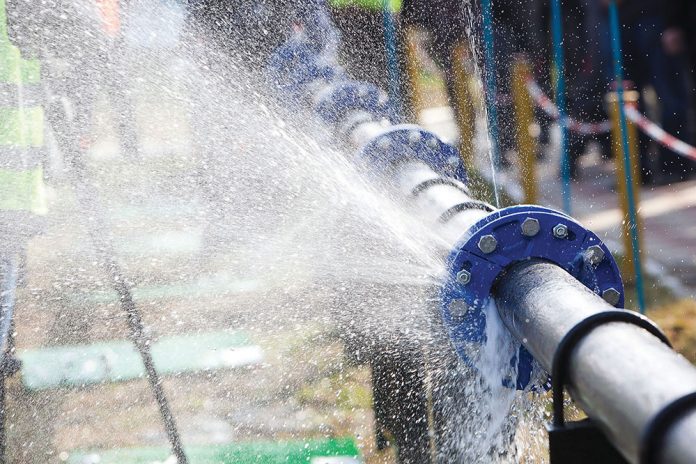Pedro Barbosa, product owner at bp Launchpad company Fotech, looks at the current issues faced by water utilities and outlines how advanced distributed acoustic sensing (DAS) technology is helping operators to monitor and maintain their networks better.
Water is an extremely precious resource, yet huge volumes are lost worldwide. According to the World Bank, non-revenue water loss costs an estimated USD$15 billion per year1. Water companies in the UK are committed to delivering a 50% reduction in leakage from 2017-18 levels by 20502 and the race is on to achieve this. One factor that will have a significant positive impact on reducing leakage is effective monitoring and maintaining the integrity of the water pipeline networks.
Problems facing pipelines
In the UK, 3,113 million litres of water are lost each day – enough to fill 1,245 Olympic-sized swimming pools3. There are a few reasons that typically cause loss: aging pipelines are more susceptible to failure, and if made from steel, could experience corrosion that results in leaks; mechanical damage can cause ruptures; or water can be stolen by being siphoned off.
Leaks are traditionally detected using internal based monitoring systems, which infer the presence of a leak. For example, mass balance and real time transient modelling (RTTM) systems use computational pipeline monitoring (CPM) to calculate different operational conditions. But they tend to have very low sensitivity to small leaks and long detectability times. As such, leaks are often missed or alarms are only raised after large quantities of water have already been lost.
Alternatively, external based systems – such as Fibre Optic Sensing – take direct measurements of different response dynamics associated with the leak, such as the noise produced by the leak. This provides a quicker detection of smaller amounts of water leakage.
The advantages of DAS
One technology that can monitor pipelines accurately for both leak detection and disturbances related to attempted theft is Distributed Acoustic Sensing (DAS). DAS technology essentially turns a fibre optic cable running alongside a water pipeline network into thousands of vibration sensors, able to detect any disturbances along the length of the pipeline.
The technology sends thousands of pulses of light along the fibre optic cable every second and monitors the fine pattern of light reflected back. When acoustic or vibrational energy – such as that created by a leak or by digging – creates a strain on the optical fibre, this changes the reflected light pattern. By using advanced algorithms and processing techniques, DAS analyses these changes to identify and to categorise any disturbance. Each type of disturbance has its own signature and the technology can tell an operator, in real-time, what happened, exactly where it happened and when it happened.
If the source of a leak is a tiny opening, it could easily remain undetected or it could take days for the location of an incident to be identified with traditional CPM systems. In the time it would take to locate such a leak, many thousands of litres of water could have been lost. DAS has proven that it can detect leaks as small as 20 litres per minute, raising the alarm in just 90 seconds, by which time only 30 litres will have escaped. This speed is significantly faster than existing technology. DAS can also identify water leaks from many different sized holes, even as small as 1mm.
Enhancing network integrity
Maintaining pipeline network integrity and protecting against leaks are vital priorities for water companies due to the efficiency improvements that can be made and resulting cost savings. By gaining real-time visibility of the integrity of their entire network, water companies can protect against water loss, and can safeguard their assets and bottom-lines while reducing risk.
For more information visit fotech.com.
Reference:
1 Reducing Water Loss in Developing Countries Using Performance-Based Service Contracting (worldbank.org)
2 Leakage – Ofwat
3 https://discoverwater.co.uk/leaking-pipes




